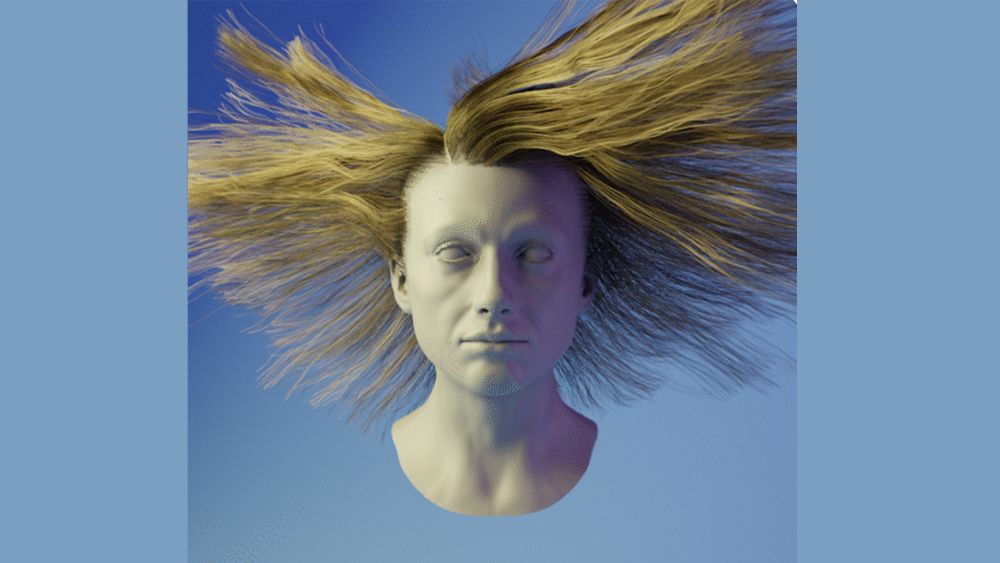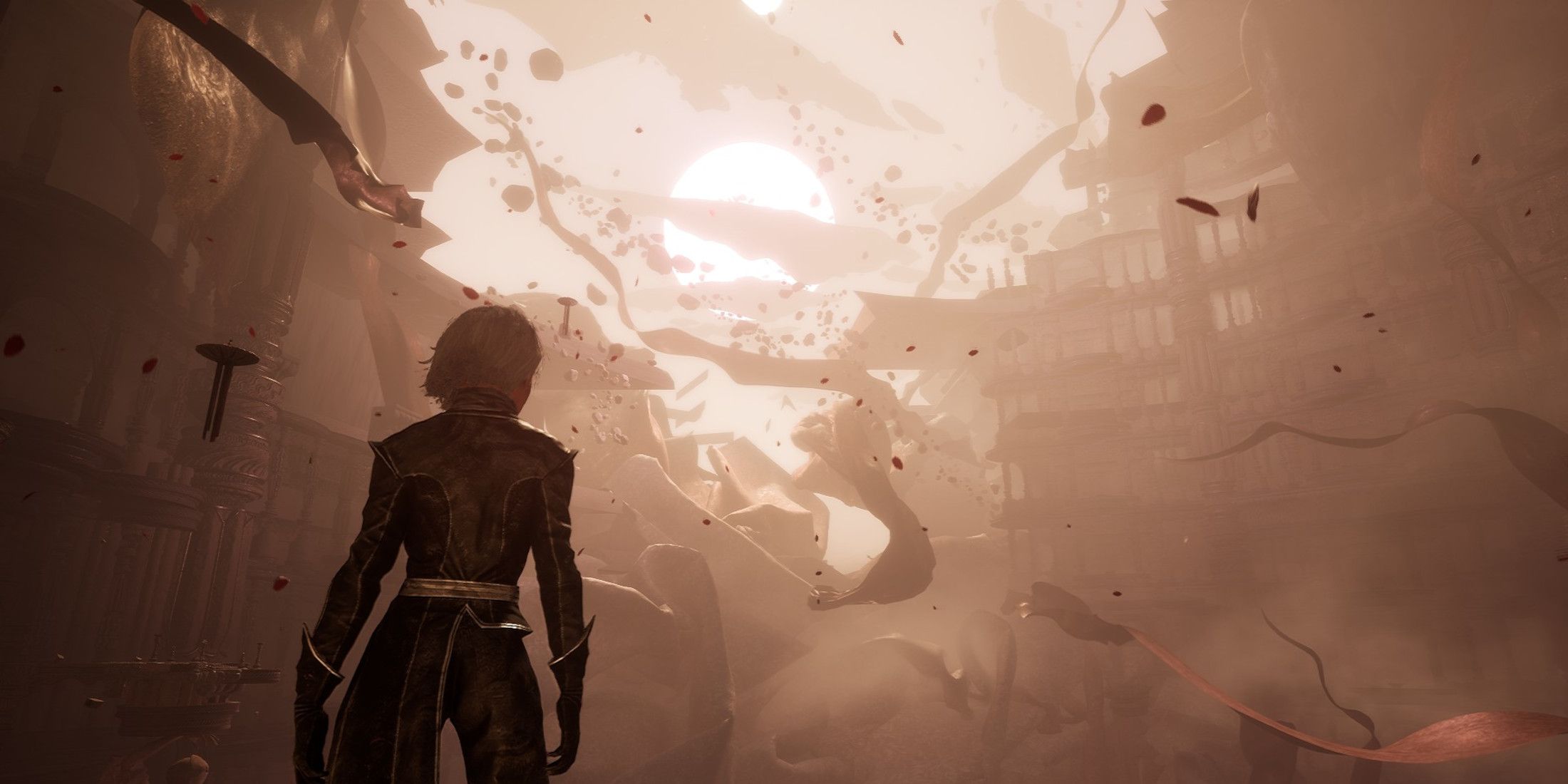80.LV
Realistic Dark Fantasy-Style 3D Take On Shrek & Fiona
IntroductionHello, my name is Valentina. I've been working as a 3D Character Artist since 2021. Before working in 3D, I studied at an art university as an art restorer. In my final university years, I learned about such a direction as 3D graphics. I was playing a lot of video games at that time, and I was quickly drawn to the prospect of creating models for video games. I studied everything to get into the game industry as a character artist. When I got a job in the industry, I became interested in expressing myself through 3D work. I was both learning new techniques to boost my skills as an artist as well as starting to come up with my own ideas for my own enjoyment.From the beginning, I have been a self-taught artist using tutorials on the Internet. However, I learned important skills while working in an outsourcing studio as a junior 3D artist with good lead artists. After that, I improved my skills again, but more through practicing making more complex models. Sometimes, but much less often than before, I also turned to various tutorials on the Internet to become a more professional artist.During this time, I tried my hand at different projects as a character artist. I've worked in gamedev, on cinematics, and for 3D printing. A famous project I was a part of was Spider-Man 2.The Shrek ProjectWhen I started work on Shrek, I thought about the fact that I wanted to do something funky. I wanted to practice my armor sculpting skills, but I also wanted to just have fun. A realistic dark fantasy-style Shrek is pretty fun, in my opinion. In this project, I tried to imagine what Shrek would look like if he were a bit more realistic, but I didn't want to lose the likeness to the original, so I tried not to change his appearance and proportions too much.ReferencesMy references included many screenshots from the original cartoon so I wouldn't forget what the original Shrek looks like. I also found references for armor of approximately what type I would like. I didn't want to copy something real, but looking at pictures of real armor, I decided that I wanted to make armor with more patterns. I also found some references of aged clothing. I checked ArtStation to see how other artists have done Shrek and thought about what I liked about their work and what I didn't like so much to decide how I wanted to stylize my work. I also just looked at a lot of different dark fantasy artworks for inspiration. In this work, I mainly wanted to try to create my interpretation of a well-known character in a different style for him: dark fantasy.ModelingThis is what the process looked like under the hood:For both character models, I started with basic meshes to speed up the creation process. I made Shrek in T-pose first because it was easier for me to control the process of creating the other elements. But Fiona could be made immediately in the required pose, as she doesn't have a lot of additional details. By placing her on Shrek's shoulder, I sewed the clothes in Marvelous.For the dress, I used two materials:Default for simulation (green material) with particle distances of 10Silk Organza (pink material) with particle distances of 5For places where I wanted to get softer and more airy pleats, I also made seams for clothes right away in Marvelous. I think it's easier and looks more convincing than adding them later in the sculpting process. The seams are added with the internal lines at different angles.All armor has a basic, simple low-poly base created in Zbrush, and then detailing is done on high subdives using a layer system. The detailing looks a bit chaotic because of the number of patterns, but I added each new type of pattern separately on each layer so that I could control the strength of the extrusion of the different types of patterns. For example, I ended up making the pattern more visible on the edges than in the center.Basically, the details were made with projections alpha, but I also added a small pattern on the edges of the helmet and a large pattern in the center of a separate object to make it more visible. On top of the alpha, I sculpted armor using Orb brushes. Specifically, Orb Flatten to create flat areas and orb slash/orb cracks for scratches. On top of that, in some places, I added a little bit of different noise. On the rest of the armor elements, I used the same method using the orb brushes. For the scratches on the dragon, I used orb cracks.In general, in this project, I got a lot of subtools; I tried to do everything as much as possible on different subtools for easy editing, collecting subtools on thematic folders. But in the end, it certainly took a long time to combine it and export.I sculpted small clothes like gloves and shoes by hand, starting with a simple shape. All folds were added with a standard brush. DamStandart did creases, damage, and torn edges. In the end, the noise was added with alphas.I edited the Marvelous garment a bit, sculpting the body to fit the pose and adding torn edges and fabric damage.To speed up the work of creating fabric damage, I created my custom brush alphas. I made the threads on the edges of the fabric using fiber mesh. Simply select a mask border of the garment and create a fiber mesh in place of the mask, adjusting the gravity down, thickness, amount, and length. The extra threads between the fabric I added using a curved tube.I made the skin using Super Skin – 41 ZBrush Brushes Set for Realistic Human Skin.TopologyThis is not a game-ready model, so I didn't do hand retopology for this model. For subtools with subdivisions like clothes, armor, and body, I just exported the first subdivision and automatically unwrapped it in RizomUV. Some subtools I lightened with decimation and also did an automatic UV.TexturingThe main task of texturing Shrek's clothes was to make them dirty and greasy, with a lot of stains, different from Princess Fiona's dress, which is absolutely clean because she was just stolen from the castle. I made the dirt in different colors so it wouldn't look the same.Some of it is brown, some of it is reddish, some of it is yellowish, and some of it is blue spots, which is good to dilute the overall color palette of the shirt. With the white color, I lightened the scuff marks a bit. Shrek's skin was made of material from Substance Skin Face. Next, using an empty layer in passthrough mode with levels base color and HSL Perceptive filter, the color was changed from flesh to green. Next comes a layer with a translucent flesh texture to diversify the homogeneous skin tone.Then, using the ambient occlusion and light generators, I darkened the depressions on the face. I added different spots and dirt on the face with the spot brush manually. I also added some color variations manually with a soft brush. Again, I did a little color correction on all of the existing layers. With a curvature filter with a dark color, I emphasized sculpted pores and small hollows on the face. At the end I added some rougness to Shrek with fill layer dirt4. I decided it suited Shrek to look a little sweaty.For armor, just like with clothes and leather, I took a base of some ready-made material and then added color variations according to the same principle. I wanted to keep some balance between still shiny, beautiful armor and already looking a bit old lying down. It's not new armor, after all; Shrek picked up someone's armor that had been lying around for a long time. In the shoulder armor and helmet, I wanted to keep a reference to the dragon they were escaping from to further tie those events together in this scene.Lighting & RenderingI used four light sources. Directional for the main bright light and omni for additional illumination of the model from the top and back/side of the model.In the camera settings, I edited curve RGB to edit the color tone a bit and make the image contrast on the curve. Next, I added the fog. I added sharpen to make the details stand out better. And, of course, I added a vignette. I prefer a 50 mm perspective. I also used sticky focus for focus and added a little chromatic aberration.In post-production, I tried not to change the image too much, but I did make a couple of edits. I made the image a cooler tone. I added darkening at the bottom using a gradient on the soft light layer. With the lightener tool, I lightened the top of the model a bit. And at the end, I added some gaussian noise.ConclusionIt's hard to say exactly how long this project took because I took quite a few breaks, including a break for another project. In total, with these breaks, I worked for 4 months.The main difficulty is probably the lack of any supporting concept, so I had to keep all the details in my head, and in the process, I invented and implemented new ones. For example, from the very beginning I thought to make just Shrek in armor without Fiona, but now having the final image, I can't imagine this model without Fiona on his shoulder.I learned to be more flexible in coming up with my own ideas in the process. And quite patient, this is probably one of my longest personal projects. I've also learned how to interpret well-known characters in a different style while keeping them recognizable. And got better at sculpting armor. I advise beginners to do what they like first, think about how to apply their art and learn the necessary skills for further work.Thank you for reading, bye!Valentina Iudina, 3D Character & Creature ArtistInterview conducted by Emma Collins









